What's New
Displaying results 4661 - 4670 of 4914
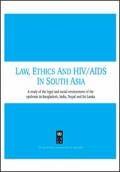
Resource | Publications,
The rights violations against people living with HIV/AIDS (PLWHA) and vulnerable groups are part of a broader environment of social and gender inequality, marginalisation and discrimination in South Asia, which is providing perfect conditions for the epidemic to spread.
This study on which this report is based was commissioned to help enhance our understanding of the deep-rooted relationship between law, rights, the social and ethical environment, and HIV/AIDS vulnerability here in South Asia, as well as to provide actionable recommendations for legislative and policy reform. The findings have revealed a regional situation where significant human rights provisions exist, both in national constitutions and in ratified international conventions, but where there remains a serious disconnect between these provisions and people’s experience at community level.

Resource | Publications,
The Asia-Pacific region is home to 60% of the world’s population and to 19% of the men, women and children living with HIV in 2004. This amounts to infection rates that are low compared with some other continents, particularly Africa. But because the populations of many Asian nations are so huge, even low HIV prevalence means large numbers of people are living with HIV—some 5.2 million men, 2 million women and 168,000 children according to new estimates from UNAIDS/WHO. The Asia-Pacific region is vast and diverse, and HIV epidemics in the region share that diversity.
This report focuses largely on prevention of HIV among adults and adolescents. It focuses largely on East, South-East and South Asia, though it also includes information from some Central Asian nations, including Iran, as well as some of the developing countries of the Pacific.

Resource | Publications,
From July 2001 to November 2002, the Asia Pacific Network of People Living with HIV/AIDS (APN+) conducted the first regional documentation of AIDS-related discrimination in Asia. The project is an action-based, peer-led study that aimed to develop an understanding of the nature, pattern and extent of AIDS-related discrimination in several Asian countries. The project was designed and implemented by people living with HIV (positive people) and received ethical approval and funding from UNAIDS.
This study generated quantitative and qualitative data. Trained positive people interviewed 764 of their positive peers in four countries (India 302; Thailand 338; the Philippines 82; Indonesia 42). Findings indicate that AIDS-related discrimination is prevalent in every sector of society.
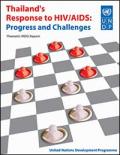
Resource | Publications,
Thailand has shown that a well-funded, politically supported and shrewdly-implemented response can change the course of the HIV/AIDS epidemic. After peaking at 143,000 in 1991, the annual number of new HIV infections has fallen to about 19,000 in 2003 – making Thailand one of a handful of countries to have reversed a serious HIV/AIDS epidemic.
The national adult HIV prevalence continues to edge lower, with the latest estimates pegging it at a little over 1.5 percent at the end of 2003. This astounding achievement translates into millions of lives saved. This report is a powerful account of how Thailand has managed to achieve Millennium Development Goal 6 – to halt and begin to reverse the spread of HIV/AIDS by 2015 – well in advance of schedule, and what now needs to be done to sustain this extraordinary achievement.
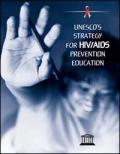
Resource | Publications,
In two decades HIV/AIDS has evolved from a medical curiosity to a worldwide human tragedy and an international emergency. It is a development disaster and a security crisis with social impacts more devastating than any war. It has reduced life expectancy by 15 years in sub-Saharan Africa and created more than 14 million orphans. Its impact is wide-reaching, and even in those parts of the world where the epidemic has been relatively slow to evolve, there are worrying signs of its gathering strength. It has spread nearly everywhere beyond the first so-called high-risk groups, today principally affecting vulnerable populations: the poor, the marginalized, young women and children. It both thrives on and fuels inequalities. Although there are signs of hope — some evidence that political commitment and energetic multisectoral programmes can slow the progression, some encouraging developments in the supply of treatment and care — measures to contain the epidemic or mitigate its effects take time. The effects of HIV/AIDS, even if the situation improves in the near future, will be with us until the end of this century.
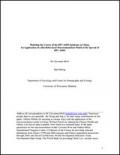
Resource | Guidelines,
The magnitude of the HIV/AIDS epidemic has exceeded all expectations since the virus was first identified 20 years ago. Today, an estimated 42 million people are infected with HIV, and more than 20 million have already died. The epidemic has hit hardest in Sub-Saharan Africa. AIDS deaths in this region account for over three quarters of the global death toll. Because of its large population, Asia is the home to the largest number of people living with HIV/AIDS of any region beside Sub-Saharan Africa. In Thailand, Cambodia and Myanmar adult prevalence rates range from 1.8% to 3%. It is expected that HIV may soon spread in the world's most populous countries, India and China.
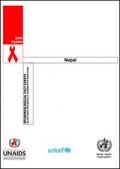
Resource | Fact Sheets,
In 2003 and during the first quarter of 2004, UNAIDS and WHO worked closely with national governments and research institutions to recalculate current estimates on people living with HIV/AIDS. These calculations are based on the previously published estimates for 1999 and 2001 and recent trends in HIV/AIDS surveillance in various populations. A methodology developed in collaboration with an international group of experts was used to calculate the new estimates on prevalence and incidence of HIV and AIDS deaths, as well as the number of children infected through mother-to-child transmission of HIV.
Different approaches were used to estimate HIV prevalence in countries with low-level, concentrated or generalised epidemics. The current estimates do not claim to be an exact count of infections. Rather, they use a methodology that has thus far proved accurate in producing estimates that give a good indication of the magnitude of the epidemic in individual countries. However, these estimates are constantly being revised as countries improve their surveillance systems and collect more information.
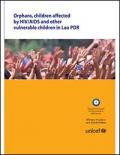
Resource | Publications,
Lao PDR is currently experiencing a period of rapid social change associated with the transition to a market economy and closer regional integration.
A number of significant child and youth protection issues have emerged in recent years, including child trafficking, sexual exploitation and abuse, HIV/AIDS, children in conflict with the law, substance abuse and street children.
While it is difficult to make accurate projections, the indications are that the number of vulnerable children in Lao PDR will increase over the next five to ten years. In this context, it is imperative that immediate action is taken to identify effective strategies for the care and protection of vulnerable children.

Resource | Publications,
In facing up the scourge of HIV/AIDS, the Malaysian Government has initiated actions well before the first case of HIV was detected in 1986. An inter-sectoral committee chaired by the Director-General of Health, known as the National HIV/AIDS Task Force was formed in 1985, to be the body responsible for formulating policies, strategic action plans as well as coordinating the HIV/AIDS prevention and control programs in the country at that time.

Resource | Fact Sheets,
In 2003 and during the first quarter of 2004, UNAIDS and WHO worked closely with national governments and research institutions to recalculate current estimates on people living with HIV/AIDS. These calculations are based on the previously published estimates for 1999 and 2001 and recent trends in HIV/AIDS surveillance in various populations. A methodology developed in collaboration with an international group of experts was used to calculate the new estimates on prevalence and incidence of HIV and AIDS deaths, as well as the number of children infected through mother-to-child transmission of HIV. Different approaches were used to estimate HIV prevalence in countries with low-level, concentrated or generalized epidemics.





